
We have three entry doors in our home: the front door, the back door, and the side door that opens to the basement. Oh, and since the back door leads to a mudroom, our other back door is a wood door. All are pictured below.

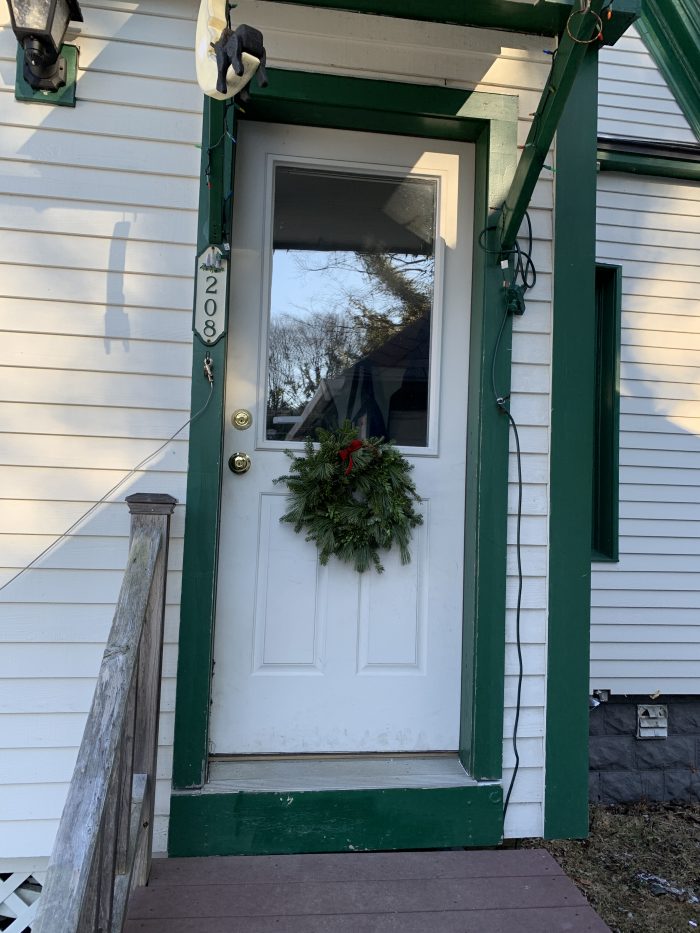
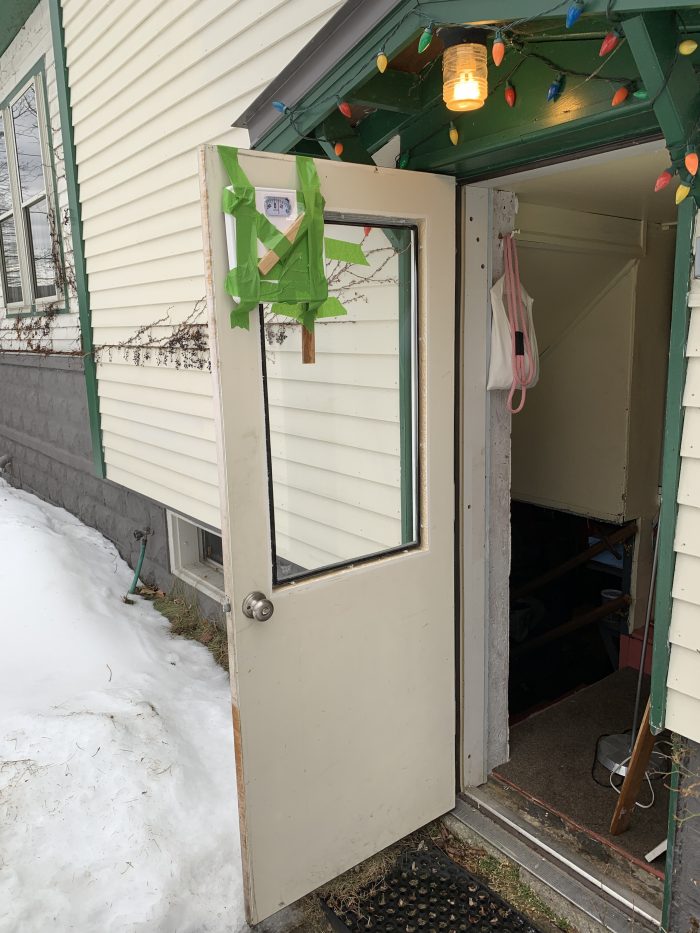
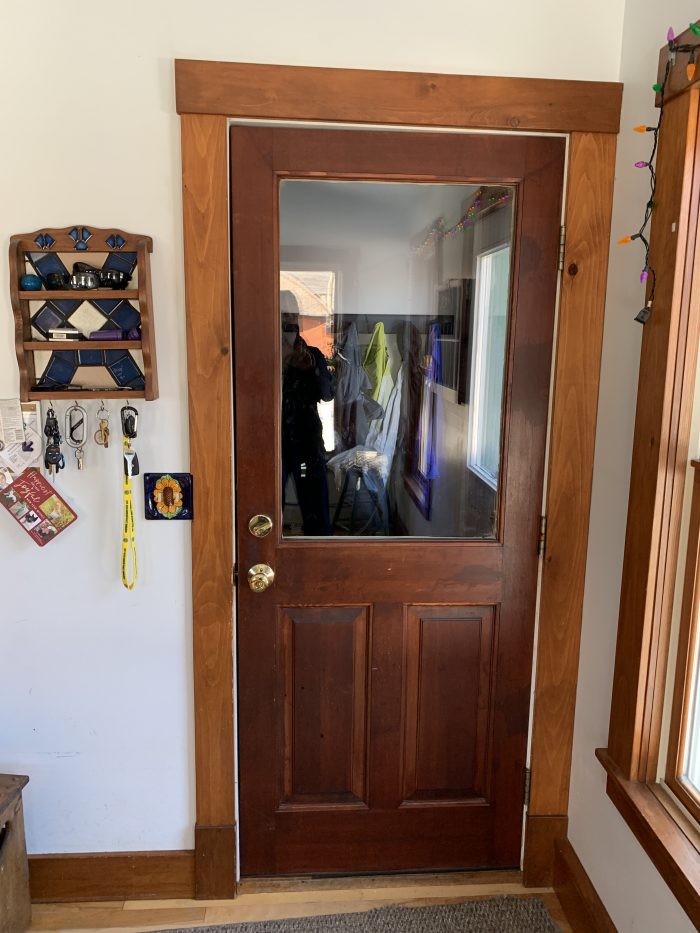
At the time that I bought them, I thought these were all decent doors (all three were installed by me around 2002 to 2004). All three are Therma-Tru, with the back door being fiberglass, the side door a composite, and the front door metal.
I chose the fiberglass back door for energy and appearance, the side door was what I could get from the building materials supplier I worked with in a custom size, and the steel front door was what was available at the time for the swing and hand I needed for that location. Again, they are all decent doors with insulated cores. But frankly, I did not take too long to become a bit jaded about my doors.
The back-door gasketing has a 5/8-in. gap at the lockset-side top corner.
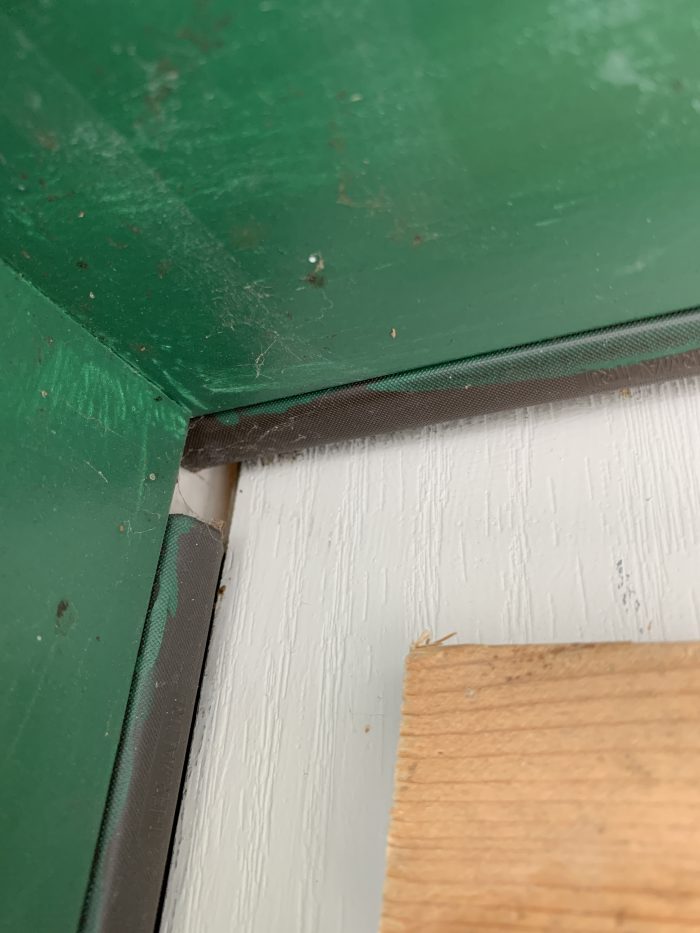
The side door has a 5/8-in. gap between the insulated glass lite and its rough opening.
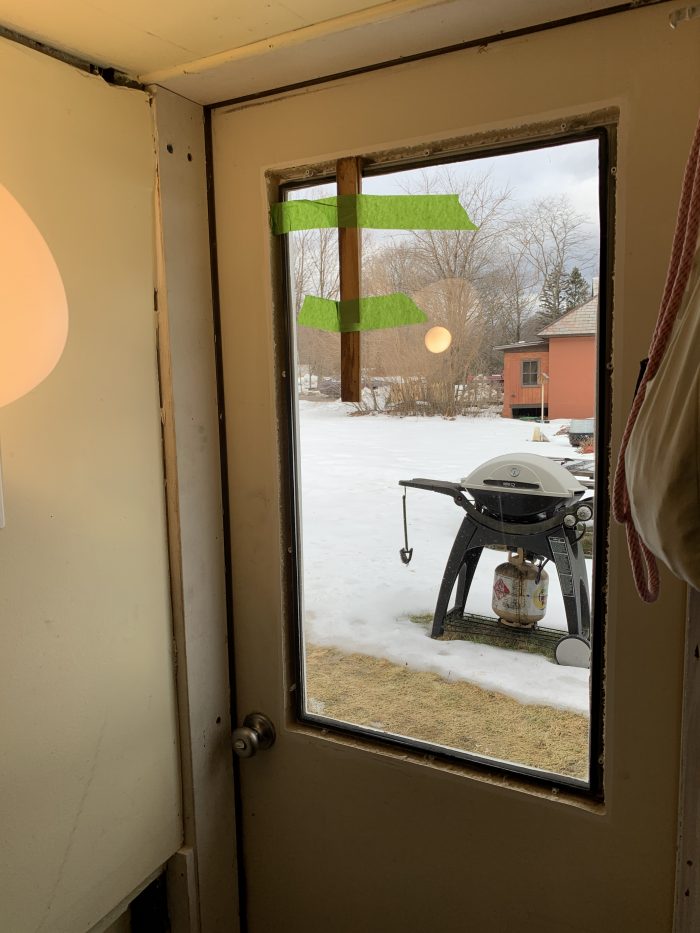
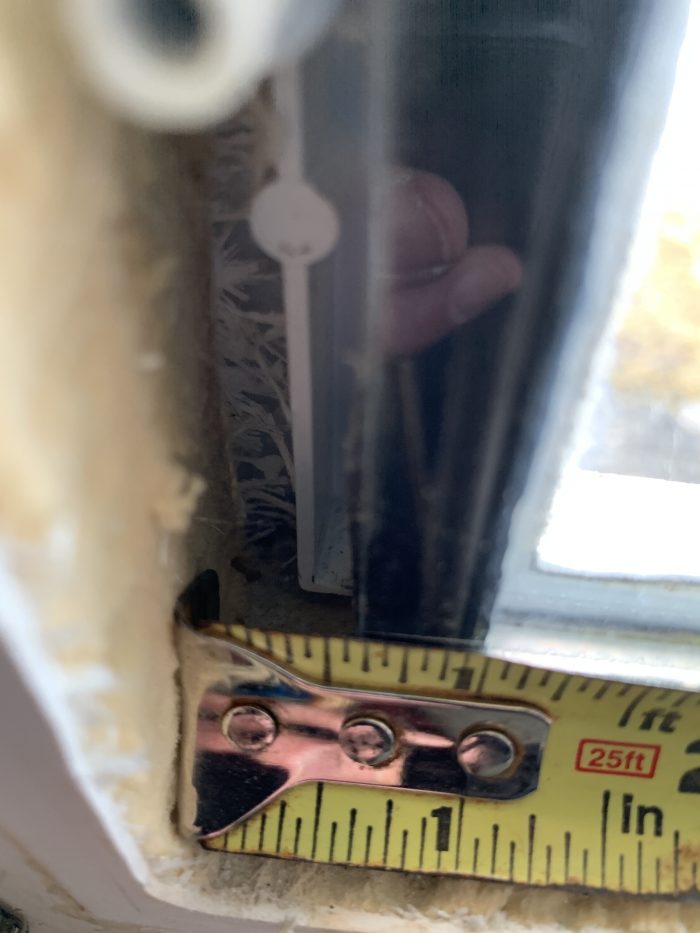
All the doors are bowed away from the stop at the head and foot of the door, on the non-hinge side.

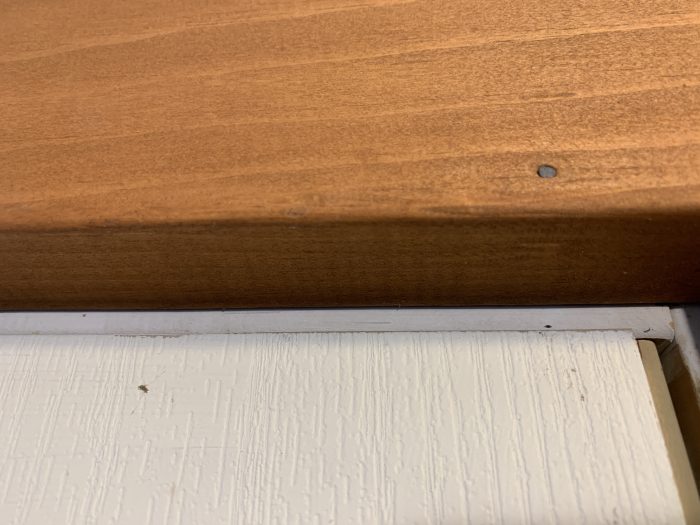
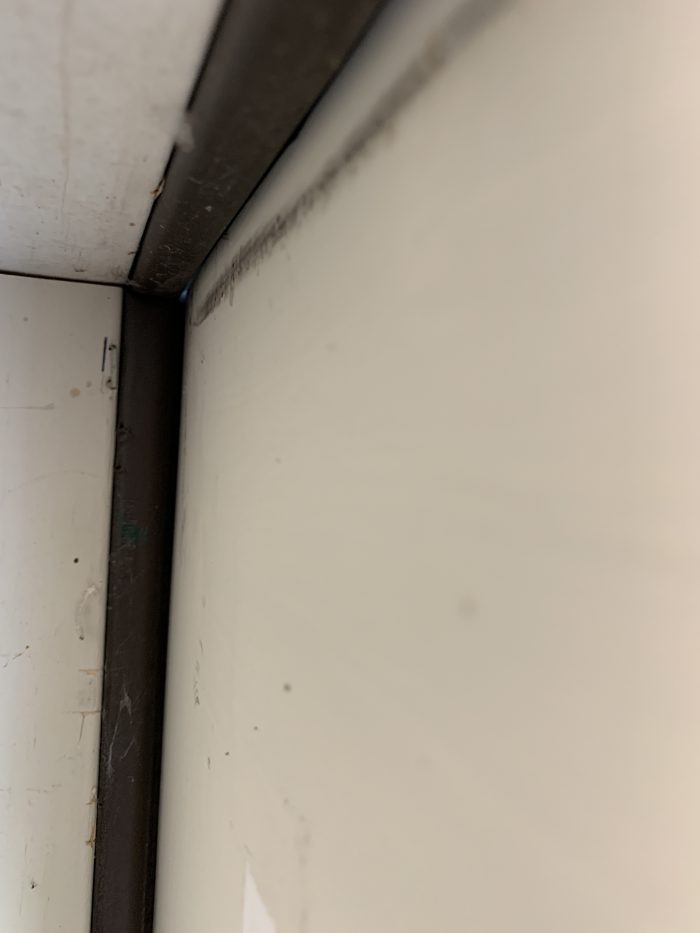
At first, I was pretty angry that the doors were bowed. But then I got to thinking about the physics of expecting a planar surface like a door to resist deformation over more than a 3-ft. span from the door handle to the top free corner of the door. Hey, even for large casement windows, most of which are a lot smaller than any door, we have at least two compression locks.
And in addition to being bowed, I got to wondering about how much force it would take to move the doors even farther off the gasketing? I can pretty easily see plenty of daylight by pushing gently away from the door stop at the lockset-side top corner, as you can see in the videos below.
How easily, you might ask?
Time for a wingnut test
I rigged up a bath scale, looking to convert pounds per square inch (psi) of pressure to Pascals and then miles per hour of wind.
Notes on the pressure test with bath scale:
- I held the scale down from the free top corner of the door—knowing that it would increase the pressure a bit from being right up on the corner—so we could see the deflection in the door and then approximate the amount of deflection for a range of pressure.
- I taped spacers to the door so that each of the four “feet” on the scale was exerting pressure evenly over the scale area.
- I taped a wood spacer to the face of the scale to spread the force I was exerting on the scale.
- The measurements are all approximate; as a wingnut test, I was trying to get a sense of the relationships, not to be strictly quantitative.
- Even though I am only showing one of the wingnut pressure tests in a video—the wood door between the mudroom and kitchen—the results of this pressure test were very similar for all three exterior doors (I did not rig up the bath-scale test rig on the front door; that door is in my wife’s home office, where wingnuts are not allowed).
Here is the math, given that the top free corner of each door deflected from about 1/16 in. to 3/16 in. with forces applied:
- Bath scale force readings: 2 lb. to 7.5 lb.
- Area of bath scale: 9 in. by 9 in. = 81 sq. in.
- Pressure (psi) 2/81 to 7.5/81 = 0.0247 to 0.09259
- Convert psi to Pa (1 psi = 6895 Pa) = 170 Pa to 638 Pa
- Convert Pa to wind speed: 38 mph to 72 mph
Have I ever checked my doors when it is blowing that hard? Nope, those are pretty stiff wind speeds for our neck of the woods. After this work, I certainly will, though!
But all this leaves me pretty convinced: To keep out air, water, dust, insects, and intruders, sure seems as though we need high-low jambs or head-and-foot secure points in addition to the center-of-door lockset.
Multipoint locking hardware options
The stresses that patio doors often face means that we have had multipoint locking hardware for those doors for quite some time.
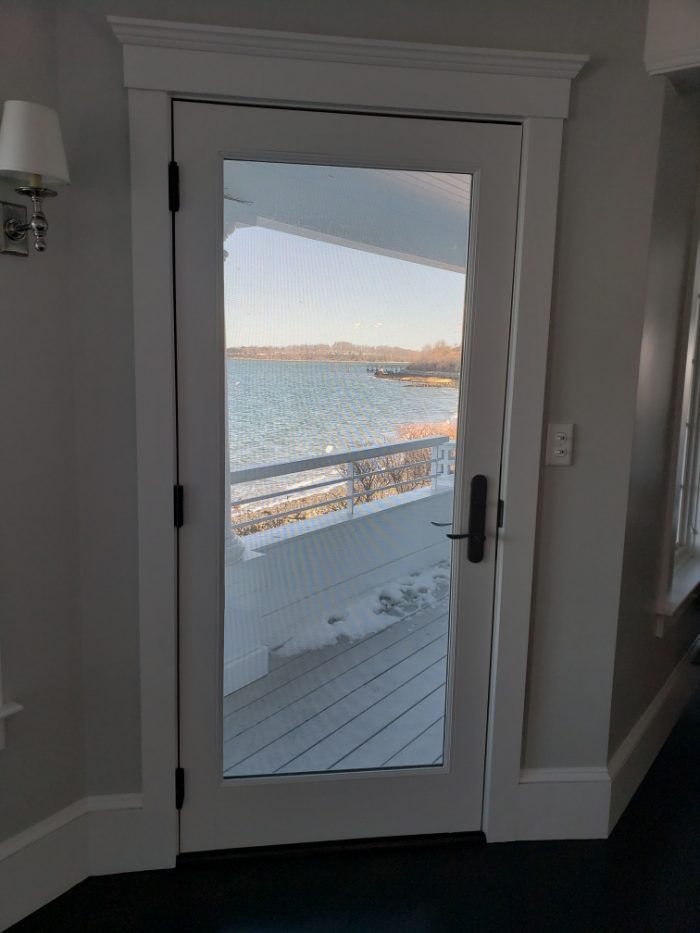
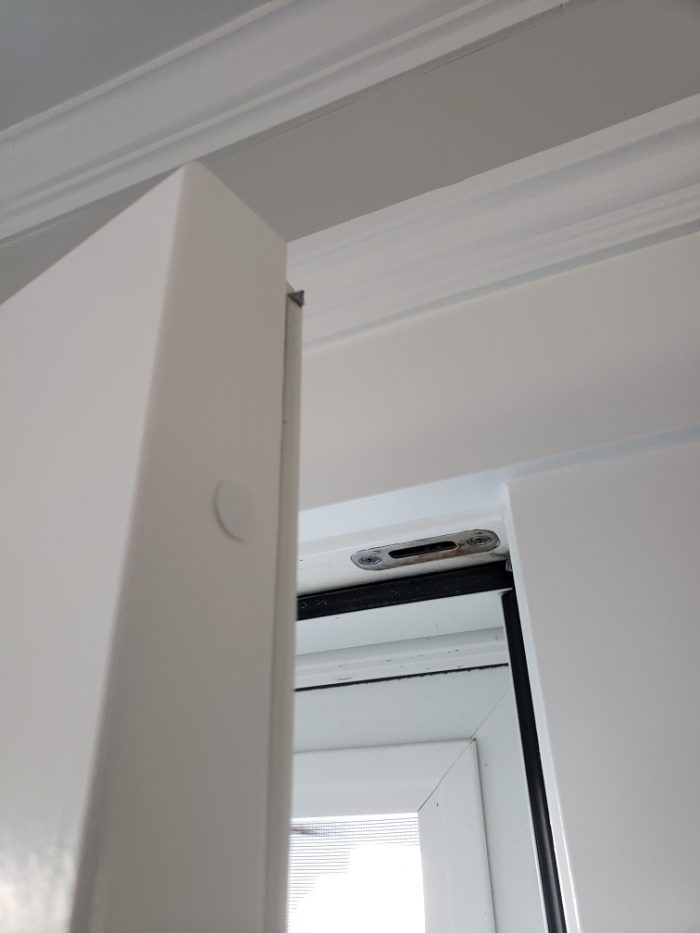
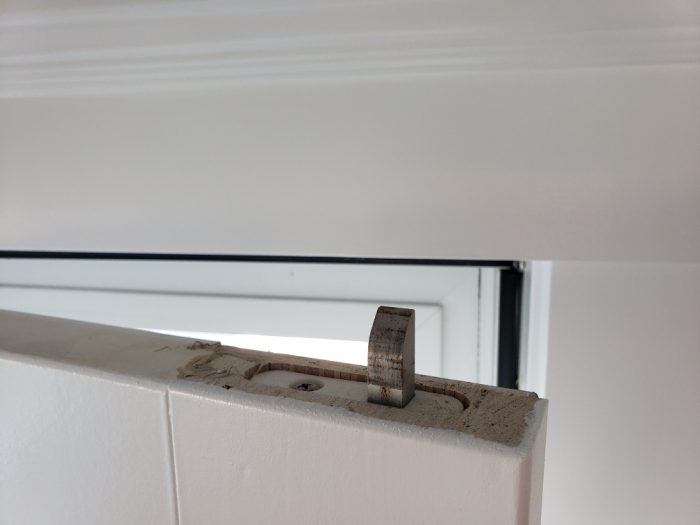
And certainly European doors have had multipoint locking hardware for quite some time, but Americans often find the operation of European multipoint hardware complex and annoying.
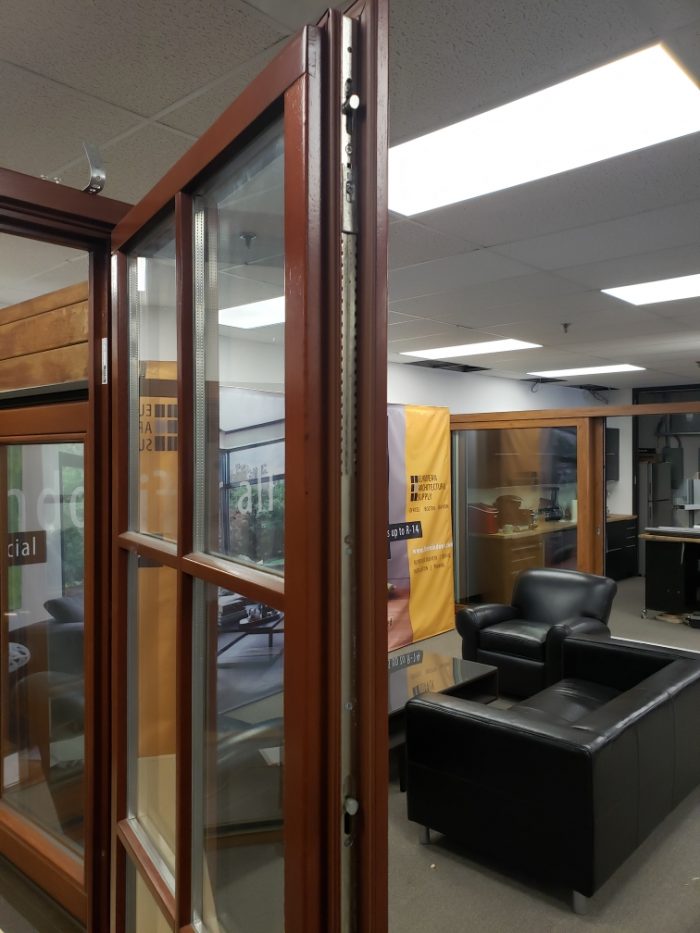
A quick survey of major US door manufacturers turns up some multipoint door-locking hardware home-builder favorites:
I found door manufacturers that use different locking hardware manufacturers (Marvin for example) and door manufacturers that use primarily one locking hardware manufacturer (Sierra Pacific uses primarily Hoppe).
But how do we decide between the two primary types of triple-point locking hardware (shoot-bolt head-and-foot or hook-bolt high-low jamb) and 5-point locking hardware (head-and-foot as well as high-low jamb bolts)?

I spent way too much time trying to figure this out on my own and was having a hard time getting real answers on the phone until I connected with Matt Taylor, director of product development with Hoppe. Taylor very kindly called me during weekend business travel and gave straightforward general guidance on this issue. Here is what he had to offer:
- It’s difficult if not impossible to get the desired or even sometimes code-required Design Pressure (DP) test result for hurricane impact zones without 5-point door locking systems.
- Tall doors—as tall as 14 ft.—often require 5-point locking mechanisms (the example he gave was tall-building residential units with patio doors).
- Jamb tongue-bolts are generally not quite as strong as hook bolts.
- Tongue bolts require less door prep/milling than hook bolts.
- With patio doors in particular, there is a trend toward narrower styles (which decrease door stiffness) and this is translates into a greater need for beefier multipoint door-locking hardware.
- A typical exterior door (3-0/6-8) can probably achieve a DP result of 40 with a single lockset mechanism, but for results greater than that, you probably need at least a triple-point mechanism.
Given what I have observed at my own home and what I learned from Matt, it seems multipoint locking systems are certainly a worthwhile upgrade in certain high-wind areas and with certain types and sizes of door. They may be worthwhile even in the most common doors if you are hoping for a long-lasting weather seal.
—Peter Yost is GBA’s technical director. He is also the founder of a consulting company in Brattleboro, Vt., called Building-Wright. He routinely consults on the design and construction of both new homes and retrofit projects. He has been building, researching, teaching, writing, and consulting on high-performance homes for more than twenty years, and he’s been recognized as NAHB Educator of the Year. Do you have a building science puzzle? Contact Pete here.
—Photos and videos courtesy of the author, except where noted.
Weekly Newsletter
Get building science and energy efficiency advice, plus special offers, in your inbox.





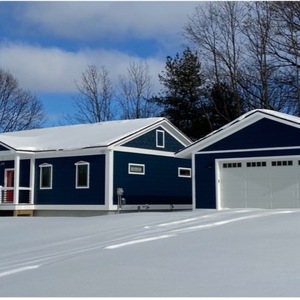
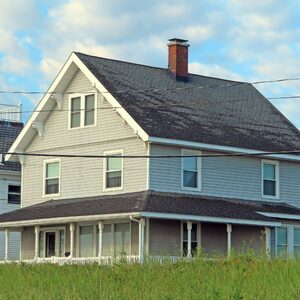

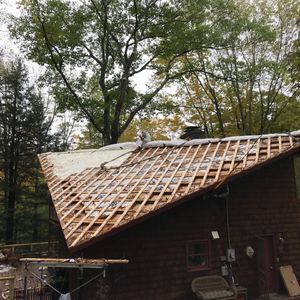






13 Comments
While the locking hardware and the door itself are important parts, what about the frame? What are the options for where all those locking points extend into the frame? How about how you attach the door frame to the house?
Many articles have been written about people simply kicking in a standard "one point" locked door (the frame breaks where the deadbolt is installed). In those cases the article suggests installing a piece of angle iron between the frame and the house (cutting a hole in it where the deadbolt goes through).
How do you strengthen the frames attachment to the house for a multi-point mechanism, or do you need to?
Scott,
Multi-point locks are now mandated by code here in BC for all residences. Just like the old single-point ones, the code also requires blocking at each lock, and the strike-plate fastened through to the framing with 3 1/2" screws.
However, any self-respecting burglar armed with cordless tools should be able to enter a house within a couple of minutes, regardless as to which hardware has been used.
The two big effects of mandating the new locks are, an increase in price of about $400 per door, and that the more complex mechanism takes away the possibility of homeowners repairing or replacing the lock, as was commonly done before.
Malcolm,
"...any self-respecting burglar armed with cordless tools should be able to enter a house within a couple of minutes, regardless as to which hardware has been used."
Any thoughts on a remedy, preferably a reasonable one? Thanks.
Don
Solid concrete, no windows, and only solid doors, with no sidelights.
Okay, maybe a few upper level windows.
Seriously, burglars can get into anything if they want to, so the key is to make it visible enough or difficult enough that they move on to easier targets.
Use your locks. Back up your window locks w/ security bars. Install motion activated lights. Get a dog. Put a security system sticker in the window. Keep the door to the garage garage locked if you have an attached garage. (If they can get into your closed garage and you leave the door open, they're in. Even with reinforced locking hardware, if they can work in the privacy of your garage, they'll probably just break a hole in the drywall next to the door.)
User...793,
It isn't something I've thought a lot about, but from what I know Andrew has pretty well covered the bases. The changes to the way usually we build that would effectively deter all thieves would compromise houses disproportionately to the risk. In places that are really dangerous, like South Africa, you see how residences become fortified compounds. That's probably not where we want to go.
The solutions are also quite dependant on location - and who is doing the burglaries. We live in a secluded rural area where thieves can work undisturbed when homes are vacant, but fortunately the local thieves are also very amateur and opportunistic. A locked house is enough to deter them. More sophisticated thieves no doubt require a bit more. Probably the most promising approach is to make your house a less appealing target than those around you - then commiserate with your neighbours when it's them that gets robbed.
Thanks Malcolm and Andrew,
I am aware of your points but the question pertained to locks specifically. I was a little surprised that modern hardware could be drilled out so easily. Other than barring a door, which is both simple and robust, and a method I have used in the past, I was hopeful there was another solution that worked when I was outside the building too : ) Thanks again for your responses.
Don
Don,
I have seen remotely activated deadbolts that had no lock on the outside. No idea how you would get in if they malfunctioned though.
Another brand of multi-point locks (for windows anyway) is "Roto". Every high performance window that I have seen uses Roto hardware.
I still chuckle every time I see the Roto logo, as it means "broken" in Spanish. :-)
Now add the problem of automating multipoint locks . I'm in New York, and have been on a quest to replace 3 doors (the quest is on-going). You wouldn't think that it was so difficult to meet this spec - but it is:
1) Multi-point locking - my parents in the UK have had this as standard for like 40 years!
2) Electronic/remotely operable (to integrate with home automation or an alarm sysem) - this is 2020!
3) Impact rated - I'm in a hurricane zone.
4) Reasonable R-value (excludes solid wood).
The trouble is most automated locks just do not integrate with multipoint hardware, and for most hardware to engage the multi-lock mechanism you need to pull the handle up, which is not supported by retro-fit lock actuators. I think I may have found one or two european lock actuators but then they were only available in european and there were other problems (like z-wave radio frequency is different to the USA).
There appears to be only one brand of lock hardware that supports this (for residential use). They are European and known in north America as G-U Ferco (http://www.ferco.ca/). They make a multipoint lock which can be operated with a Dana-Lock (http://www.danalock.com) I believe with an adapter plate that GU supply. For anyone that comes across this post looking for this, an example G-U Ferco part number is 6-35565-01-R-8B. I think it has only been available since about 2019.
Then I have to find a door maker will supply doors with this hardware. Easy? No!
I may have found one locally (https://www.royalwindowsanddoors.com/) they are say they don't currently use G-U Ferco but are "thinking about it" (I guess because the automation integration is a selling point), of course they'll have to make jigs so I'm waiting and hoping.
If anyone knows of a door manufacturer that uses G-U Ferco hardware and makes fiberglass or other good R-value impact rated doors in North East USA please post a reply here.
As of late 2022, I have found 3 multipoint lock systems that can be motorized.
The G-U / Ferco Secury Automatic that you previously identified.
The Winkhaus AV2 or AV3
The Hoppe HLS 9000
I believe that all three of these firms have US dealers. All three of these products appear compatible with "standard" access control systems -- not the sort of $150 z-wave or HomeKit compatible product you might buy at a big-box store. None of these systems are inexpensive.
My Glo patio door (available in the US, but shipped from Europe at great expense) uses a G-U multipoint lock which may be user-replaceable with a motorized model. I believe that Zola uses a similar model but I haven't inspected it closely. It may not be realistic to buy a single door from either of these companies.
Many remodelers (especially the higher end firms) will have access to a variety of custom and semi-custom door fabrication options, and there may be some that will let you specify the multi-point hardware at reasonable cost.
With these solutions you'll also need to bring power to your door frame and you'll probably need to run low-voltage wiring and purchase some other access control system (G-U and Hoppe appear to sell some stuff, but you can provide your own). There doesn't currently seem to be a good integration with the software ecosystems around the cheaper mass-market lock automation products.
Looking carefully at some of the technical drawings for the G-U product, it might be possible to fabricate a custom mounting plate for an August smart lock... if you avoid the standard "patio door" style handsets that are often installed on these things. If I go down this road I'll try to post again with my results.
Trying to decide if the multipoint lock system is worth the upgrade for the purpose of added air sealing performance to keep the home air tight at the front door.
The multipoint lock quote would add ~$1000 to a mahogany 3'6"x8'0" front door that is 2 1/4" thick.
Guess would be the $ saved due to reduced leakage would take a while to get back. Would assume locks would help with moisture management; however, on a house that will be roughly 2.8-3.5 ACH50....
Would it be a $ wise or unwise investment to consider the lock upgrade?
Could one just add a simple dead bolt from HD/Lowe's to the top and bottom thirds/quarters of the door via drilling through it with a donut saw and achieve the same result as the multipoint system for less $?
Thank you.
Doors are an area of great interest for security and efficiency, so good article and discussion.
If I'm understanding this article correctly, it seems like it focuses on sealing on the face of the door. If the door warps in on the corners, then you don't get a seal on the face.
I've been using a good bronze weatherstrip screwed to the door frame, which of course is not very high tech. The bronze strip contacts the edge side of the door, so it is not affected if the door warps some at the corners. I don't know quantitatively how the bronze performs on stopping infiltration air, but qualitatively it seems to stop the winter winds from blowing in.
https://www.amazon.com/M-D-Building-Products-19103-Bronze/dp/B011ABORV0/ref=sr_1_3?keywords=copper+weather+stripping+for+doors&qid=1579722705&sr=8-3
We also like the electronic deadbolt so we just punch in a code rather than carrying keys. As noted in a previous comment, these expensive multipoint locking systems would prevent me from installing an electronic deadbolt like the link below.
https://www.amazon.com/Schlage-BE365VCAM619-BE365V-Camelot-Deadbolt/dp/B000NJJ1MQ/ref=sr_1_8?keywords=electronic+door+lock&qid=1579723184&sr=8-8
I’ve found that some door manufacturers — Upstate Door comes to mind — have taken to engineering their door cores to mitigate warping. I can’t say how well this works as my oldest installation of an engineered core door has been five years.
In cases where a door is used only from the interior — such as the French door pair in my living room — I have taken to using face mounted shoot bolts, sometimes called “panic” bolts, on the top and bottom of the primary panel (the secondary panel already has shoot bolts) to help correct and counteract warp and reduce air leakage.
In historic districts, where preservation and maintenance of historic context is paramount, the doors are too thin to accommodate multi-point locksets, fabricating custom replacement doors is too costly for the client and, the doors see regular use, I have used Cremone bolts to address warp and air leakage.
Still, in all these cases, I haven’t found any lockset that operates as reliably and, prevents warp and air leakage, as well as a factory installed multipoint lockset.
Log in or create an account to post a comment.
Sign up Log in